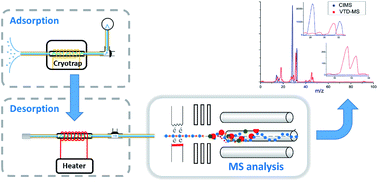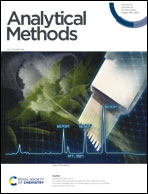Mass spectrometry coupled with vacuum thermal desorption for enhanced volatile organic sample analysis
Abstract
Mass spectrometry (MS) has been widely used in the detection of volatile organic compounds (VOCs). Sensitivity can be improved by coupling with appropriate pretreatment technology, such as selective adsorption and desorption of analytes using specific sorbent materials. This paper introduces a modified desorption strategy, which integrates cryotrapping adsorption, vacuum desorption, and thermal desorption. Characterization of the proposed pretreatment method has been carried out on a miniature quadrupole mass spectrometer equipped with an electron impact ionization source. During experiments, VOC samples were first collected by using a Tenax sorbent tube cooled in a drikold cryotrap and then released by heating under vacuum conditions. By using a proper MS inlet, the sorption tube can be rapidly emptied before the desorption of analytes, which greatly improves the sampling efficiency of direct introduction MS analysis and reduces the spectral interference of air background molecules. Effective enrichment of VOCs was achieved in the experiments such that the MS detection sensitivity for toluene was increased by 284 times with a sampling time of 2 min. Furthermore, a rough chromatographic separation effect was observed in the vacuum thermal desorption process, and the proposed sampling strategy also showed good quantitative ability in the direct MS analysis of VOCs.



 Please wait while we load your content...
Please wait while we load your content...